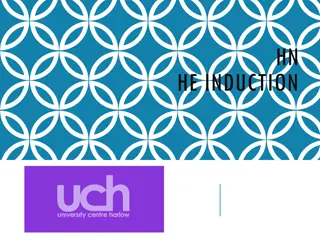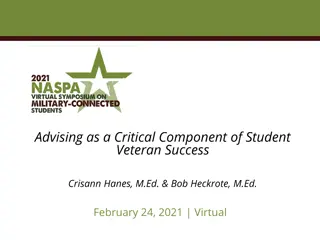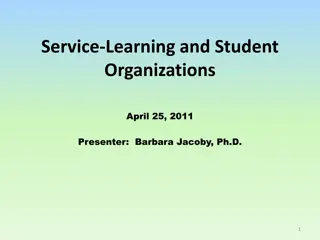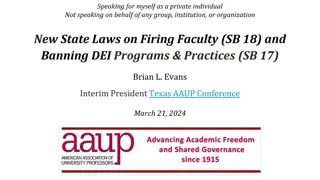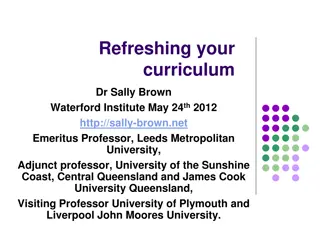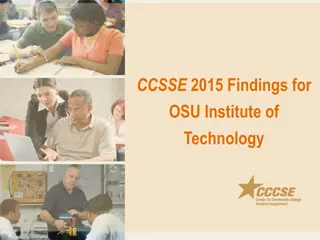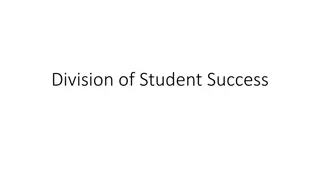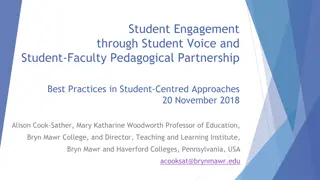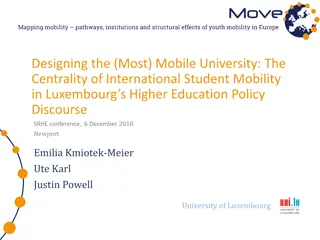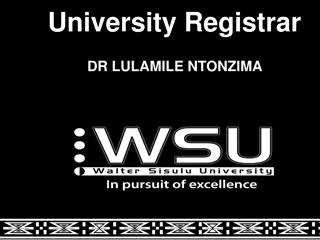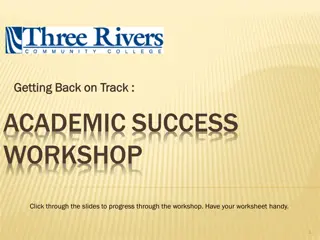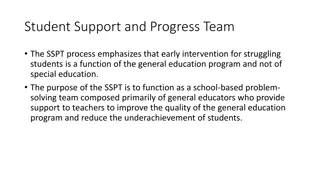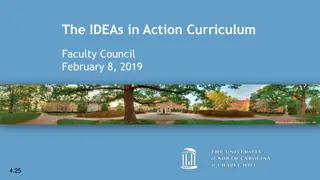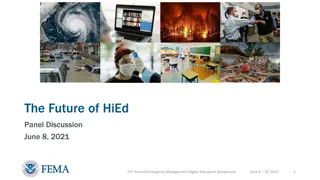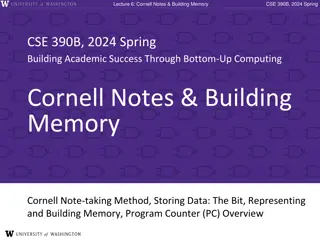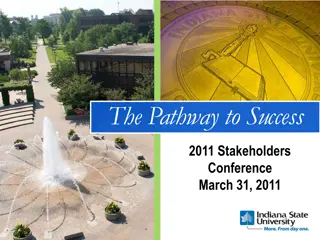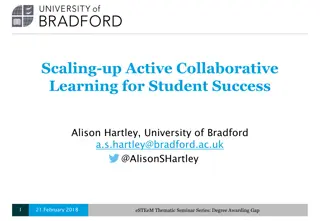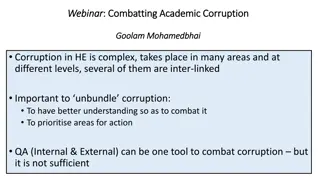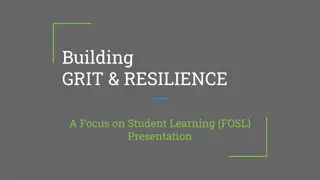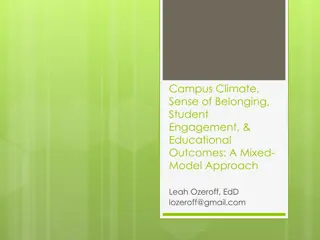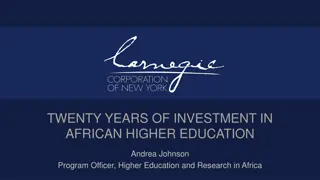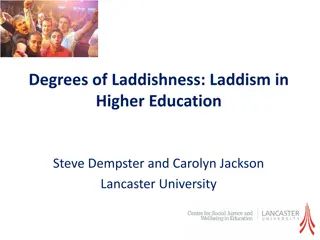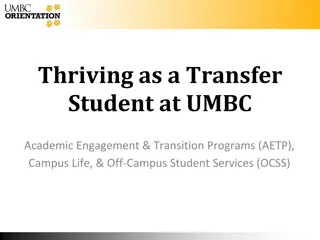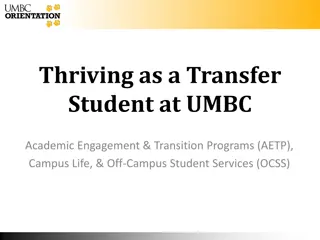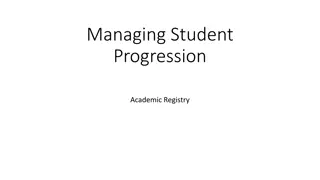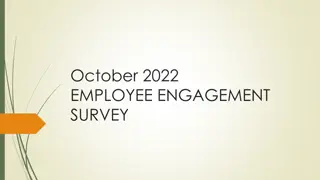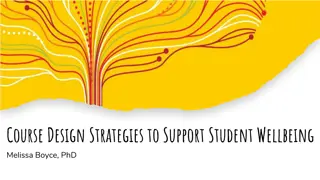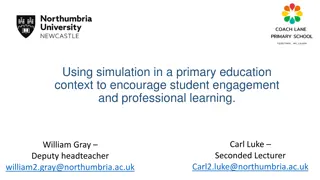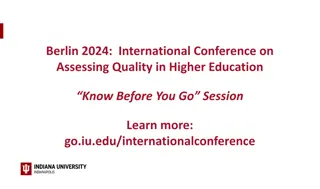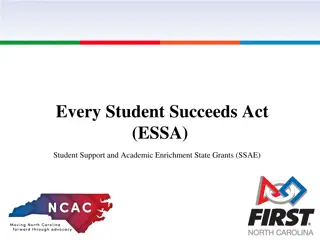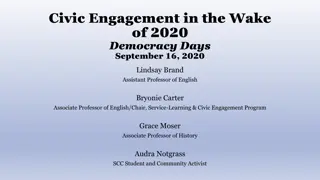Enhancing Student Engagement and Academic Success in Higher Education
Techniques to aid student engagement and success in academia include active learning, collaboration, and alignment with research on effective learning methods. The presentation also highlights statistics on women and minorities in STEM fields, as well as the challenges faced by minority students in higher education institutions. Various forms of capital and the sense of belonging affect students' academic journey.
Download Presentation

Please find below an Image/Link to download the presentation.
The content on the website is provided AS IS for your information and personal use only. It may not be sold, licensed, or shared on other websites without obtaining consent from the author. Download presentation by click this link. If you encounter any issues during the download, it is possible that the publisher has removed the file from their server.
E N D
Presentation Transcript
Helping Students Engage and Thrive Barbra Sobhani Fall 2016
Access Active Learning Collaboration
Active techniques include: Group exercises Activities Project based Learning Inquiry activities Discussions that engage students in problem- solving and deep processing of information.
Alignment with research on how students learn Addresses the changing nature of students (info access) Supports a transdisciplinary shift Employers also want non-cognitive skills Balance depth vs. breadth of material
Women in STEM fields: the numbers https://www.nsf.gov/stati stics/2015/nsf15311/diges t/theme2.cfm#economic s
Full NSF Report 2015 https://www.nsf.gov/s tatistics/2015/nsf15311 /nsf15311.pdf
American Indian or Alaska Native Asian 2014-2015 1% 3%2% 4% 4% Black or African American Hispanic 13% 0% Native Hawaiian or Other Pacific Islander White Two or more races 73% Race/ethnicity unknown RRCC Office of Inclusion and Diversity October 2015
Higher percentages of women and minorities receive Pell Grants at the Community College level *Data from AACC and AGI Status of the Workforce reports
The Invisible minority RRCC is rapidly becoming a predominantly LIFG institution Students sense of belonging is often impeded*
Human Capital Cultural Capital Social Capital Financial Capital Belonging Uncertainty Walton and Cohen (2007), Ward, et al (2012), Schwalbe (2007)
Academic Integration Human Capital Cultural Capital Social Capital Financial Capital Belonging Uncertainty Social Integration Cultural Integration Walton and Cohen (2007), Ward, et al (2012), Schwalbe (2007)
No sense of belonging Lack of self-advocacy Difficulty making social connections Time management Preparation for class
Increasing student engagement Connecting the student to community Understanding cultural context Creating a multi-contextual environment
Our own cultural experiences form the lens through which we view the world around us. In today's diverse world of higher education, understanding how this affects interaction with students who do not share that same cultural context is very important. Successfully engaging students in STEM requires meeting them where they are and helping them see how science/math is relevant to their lives.
Alicia Chavez (University of New Mexico) has developed aframework for reflectingon how the cultural context in which we were raised manifests itself in our psychological makeup and how that impacts the way we teach and interact with students. Chavez's process for developing an autobiography includes:
Born as. Born into .. ME! Learned ..
Describe it. Discuss the assumptions and beliefs that underlie it. How does it manifest itself in your life and behaviors? How does it manifest in your teaching and the way you interpret, judge, design for, and interact with students? How is it helpful to your effectiveness as an educator? How is it limiting?
Analyze how this suite of values and traits affects your view of and work with students, especially those who have different cultural values than your own.
Cultural Identity: Value: Value: Value: Origin: Assumptions: Current Origin: Assumptions: Current Origin: Assumptions: Current Reinforcer: Reinforcer: Reinforcer: Behavior: Behavior: Behavior: Cultural Self Awareness Worksheet developed by Alicia Fedelina Ch vez, Ph.D., Associate Professor, Educational Leadership & Policy, University of New Mexico
Landmark study by Steele and Spencer (Univ of Michigan): Strong women and men math students were recruited One group was given a math test and told that it showed gender differences in the scores The second group was given the math test and told that it showed no gender differences in the scores
When told the test showed gender differences, women performed worse than equally skilled men When told the test showed no gender difference, the women performed at the same high level as the equally skilled men, the underperformance disappeared
Women and minorities underperformed when they were under the identity contingency of stereotype threat, but not when that contingency was removed. The impact their identities had on them changed dramatically from one situation to the next
Resource: Whistling Vivaldi: how stereotypes affect us and what we can do by Claude M. Steele
A set of tools to help individuals assess their cultural blind spots are the tests is run by Project Implicit. The Implicit Associate Tests (IATs) aim to investigate thoughts and feelings that exist outside of conscious awareness or conscious control. These implicit biases do not necessarily constitute prejudice, but they can be predictive of behavior in the absence of conscious efforts to be egalitarian. On the website there are tests probing biases on a number of different axes, including: Skin Tone: Assesses unconscious bias regarding lighter vs darker skin tone Gender - Science: Assesses unconscious bias regarding women in the sciences vs the liberal arts Gender - Career: Assesses unconscious bias regarding traditional gender roles Race: Assesses unconscious preferences regarding blacks and whites Sexuality (Gay-Straight): Assesses unconscious bias regarding homosexual vs heterosexual
Activity 2: LC/MC One Page Worksheet Complete the characteristics table on two levels: 1. The Individual Level: Quickly chose between the two parallel statements in each column that best characterizes you as you work or study within the context of the most familiar educational setting (e.g., department, college, campus, etc) but not at home or other non- academic communities. Circle the letter M (for me ) on either the right or left comment. If you feel you are both or can t decide, mark the M in the middle between the comments.
Activity 3: LC/MC One Page Worksheet Complete the characteristics table on two levels: 1. The Institutional Level: Now, do the same but select the most appropriate statement or characteristic that best describes the institution in that same educational setting. Circle the letter O (for organization ) on either the right or left comment. If you feel you are both or can t decide, mark the M in the middle between the comments.
Hall defined it as inter-cultural communication based on observations of interpersonal transactions across a wide variety of cultural interfaces. That transaction takes account of how information is handled and how cultural messages are transmitted. Cultural context translates behavior into meaning why do people do what they do and how that affects everything around us both consciously and unconsciously.
MC Interaction Interaction Emphasis on words to supply meaning & low use of non-verbal signals Communication is direct Disagreement is depersonalized High use of non-verbal signals with words to contextualize meaning. Communication is indirect Disagreement is personalized
Individuated Integrated Traditional science lab Follow a procedure Get a result Analyze result Inquiry based lab No set procedure Student discovers Develops context This is why we need a variety of learning strategies
LC HC
Reframe Emphasis on relevance Attract Create community Thrive Raise expectations for success




